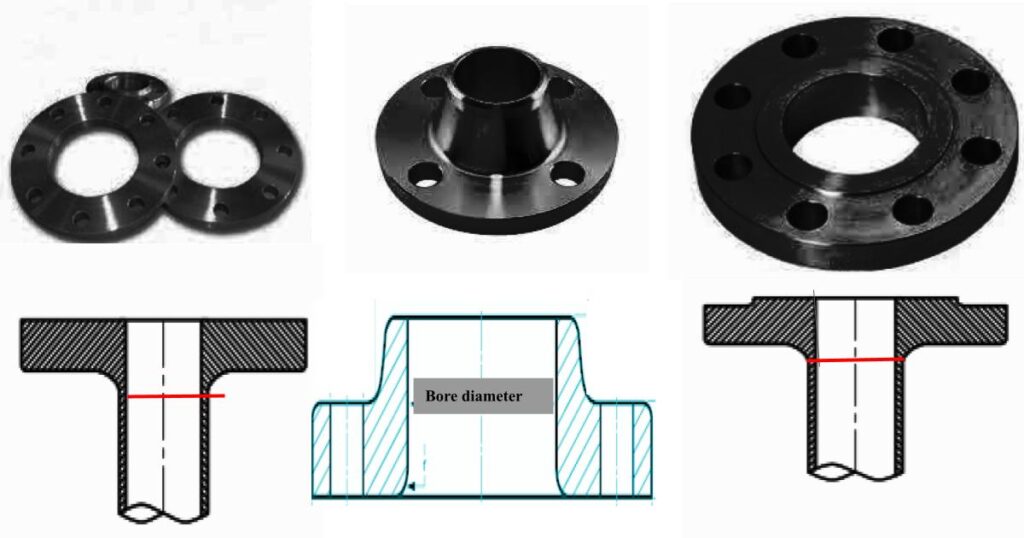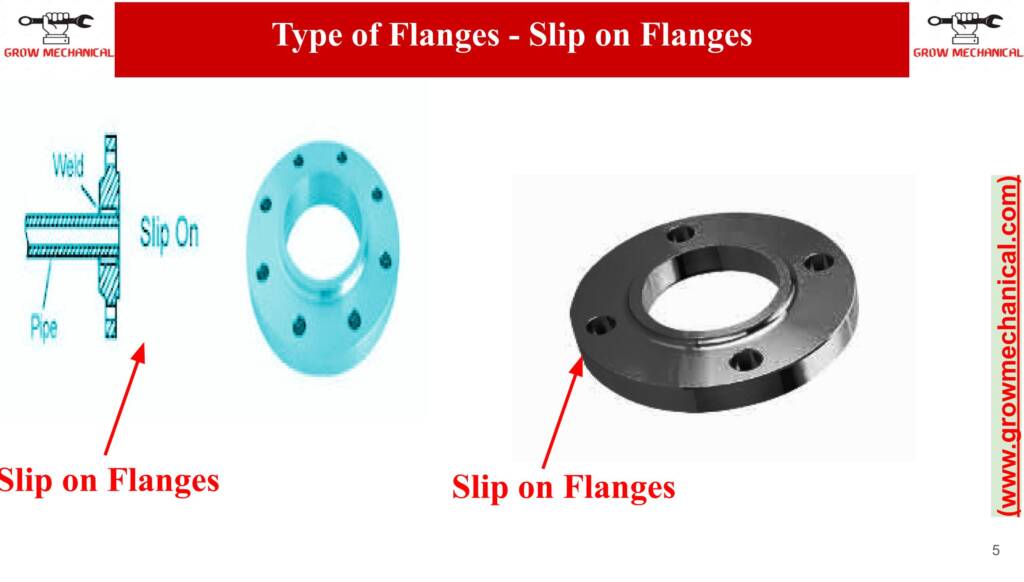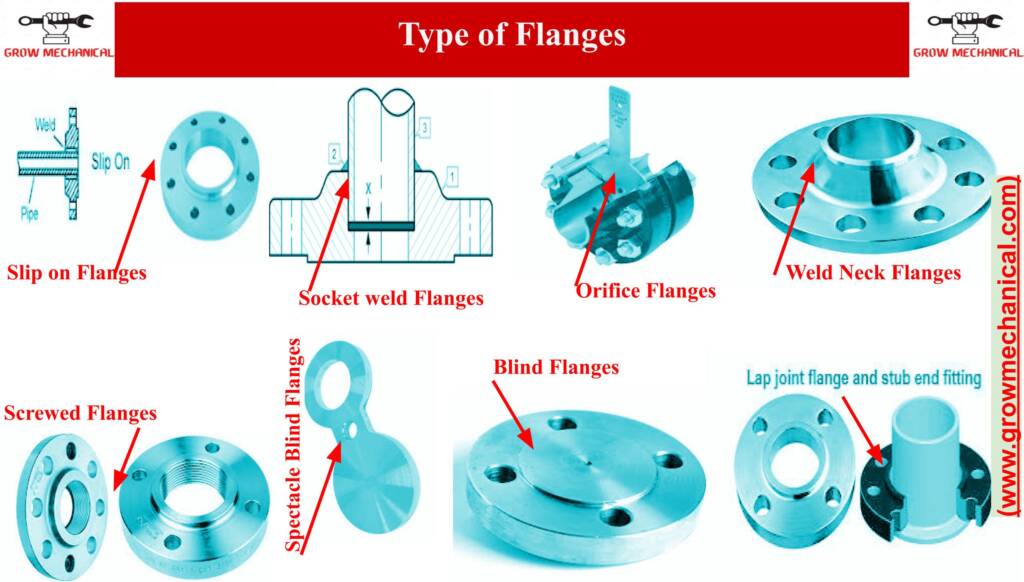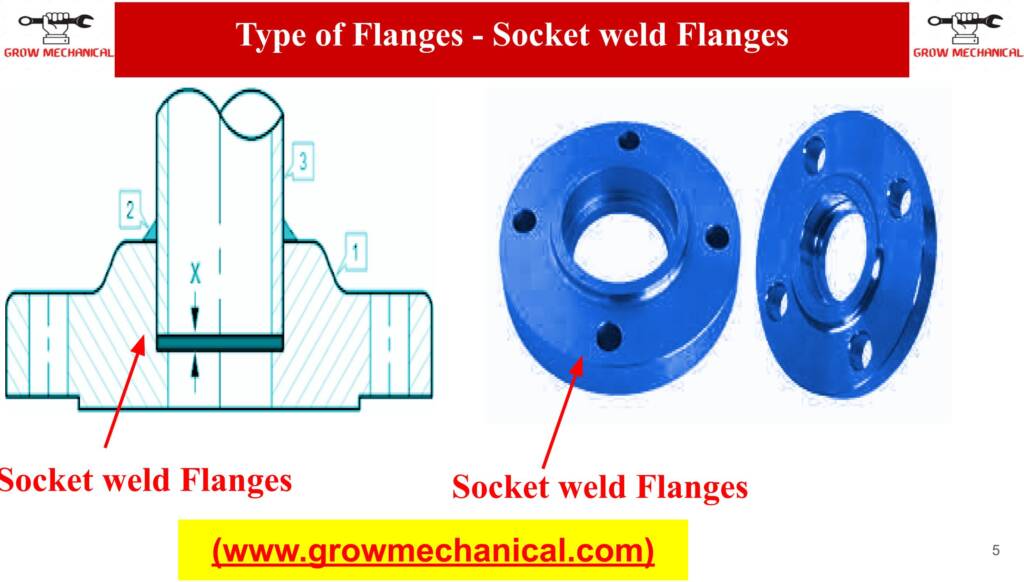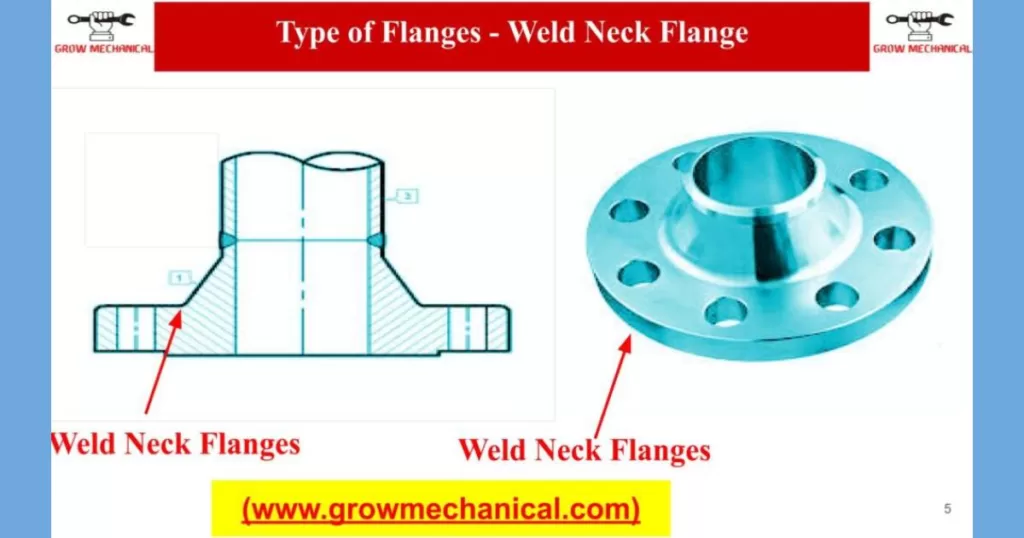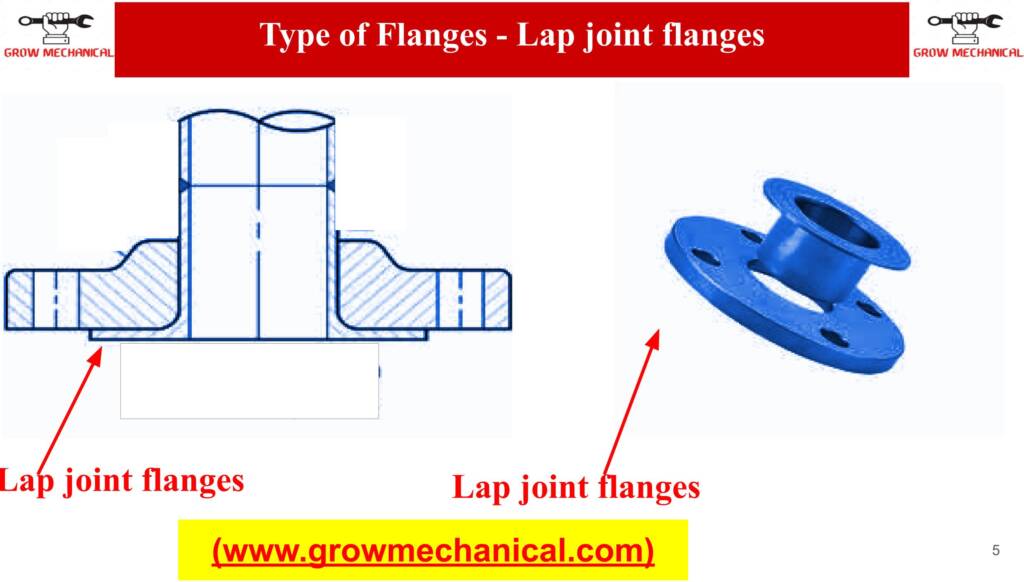What Are Plate Flanges?
Plate flanges are flanges which are made from metal plates. This type of flange is incredibly versatile, and can be used for a wide variety of applications in industrial sites. It is usually come pre-drilled and tapped with holes, though they can also be customized according to your specific needs. This is come with a variety of different specifications depending on the type and size, including outer diameter, bolt hole configuration, and thickness. For example, standard plate flanges usually come with a 10mm-20 mm thickness and are available in a range of sizes up to 48” in diameter. Additionally, they usually feature two or four holes for bolts to be inserted and tightened into place – though custom orders can include more and different configurations.
This has a list of advantages over other types of flange, primarily due to their robust construction that is resistant to corrosion and subsequent flange failure. Furthermore, because they are constructed from metal sheets. These fittings are incredibly strong and reliable making them the perfect choice for pressure piping systems that require extra strength.
Types of plate flange
-
Weld Neck Plate Flange
A weld neck flange is one of the most common types of plate flanges and used for connecting two pipes in a high pressure piping system. This type of plate flange requires welding, so it has an extended hub designed for better compatibility when welding with other components or pipe systems.
2. Slip-On Plate Flange
Slip-on plate flanges are similar to weld neck flanges as they can also be used for any kind of pipe connection. They are often used in low to medium pressure applications
3. Socket Weld Plate Flanges
Socket weld plate flanges are typically used in very high pressure applications due to the heavy welded insert which allows them to handle more stress than other types of plate flanges. Like the name implies, these types of plate flange require welding into a socket before bolting together and producing a tight, secure joint between pipes or fittings.
4. Threaded Plate Flange
Threaded plate flanges connect your pipes and fittings by threading instead of welding, providing ease of assembly as well as strength and durability because it can hold up against high temperatures and pressures without loosening over time like traditional welded joints do.
5. Blind Plate Flanges
Blind plate flanges are usually used at the ends of pipelines to prevent leakage by blocking oil, gas, or water passing through two sections in a piping system that cannot be connected with bolts or any other method apart from permanently closing off one end using this type of plate flange that completely seals off an area when installed correctly.
6. Lap Joint Plate Flanges
Lap joint plate flanges can be easily disconnected quickly while still providing an incredibly strong hold due to its design which includes an outer ring (known as a lapped ‘stub-end’) that fits over a pipe’s end or within another piece of equipment – such as valves – creating an instant seal each time it is reused so there is no need for fabrication for every different job.
7. Long Weld Neck Plate Flanges
Long weld neck plate flanges can handle even higher pressures than regular weld neck plates but instead have longer necks which allow for greater support than traditional designs would typically provide – making this preferred choice when simplicity needs to meet stringent requirements during severe temperature fluctuations throughout operations.
Plate flange vs slip-on flange
- Plate flanges are used in piping systems to create a permanent and secure connection between two pieces of pipe. Plate flanges are typically machined from a single piece of metal and have a flat surface with grooves or bolts around the circumference to connect the pipes. They require welding for installation and provide a secure, reliable connection.
- Slip-on flanges are a type of loose flange that is slip fitted onto the end of a pipe before being welded into place. This type of flange is often used in low pressure applications where pipes can move slightly. It is also more cost effective than plate flanges since it requires less material to manufacture them.
- Pressure Rating: The primary differences between plate and slip-on flanges concern the pressure each can withstand before failing under stress. Plate flanges have a higher pressure rating, up to 2,000 psi, while slip-on flanges typically have between 150 and 300 psi ratings depending on size and application requirements.
- Installation: As mentioned above, plate flanges must be welded into place while slip-on flanges can simply be slipped into position over the end of the pipe before being welded together firmly. This makes installation easier in some cases but not all – you must take into account whether there is enough clearance for welding around the Pipe Fitting when choosing which option will suit your particular project best.
- Weight: Compared to plate types, slip-on types are lighter due to their low wall thicknesses.
- Cost: Slip-on vs Plate Flange cost comparisons vary considerably but generally speaking there are several factors that’ll affect cost such as material grade (which determines strength & durability), wall thickness, size plus labor rates & other associated charges that’ll all add up during calculations with regards to individual quotes & estimates – so always double check this beforehand too.
- Durability: Strength & durability depends largely upon material selected although both plate & slip on’s can offer excellent performance when applied properly under ideal conditions either way (in most cases). That said, obviously one offers far higher results than the other without sacrificing much by losing out on any space when installed correctly though so again this’ll come down to finding the right balance based upon specific requirements at any given time accordingly too.
Plate flange code and standard
-
ANSI B16.5
The American National Standards Institute (ANSI) is an internationally recognized regulatory body that sets standards for pipe flanges, and the B16 series of documents are effectively a roadmap, addressing various aspects of flange design and materials to ensure safety, efficiency and quality in the workplace. The most commonly used document in this series is the ANSI B16.5 standard which deals with all aspects of flat face raised face and ring type joint flange systems along with associated gaskets, bolting assemblies and allowable pressure ratings.
-
MSS SP-44
This document from the Manufacturers Standardization Society focuses on integral flanges for use with pipes being installed in accordance with ASTM A312 or ASTM A358 specifications and detailed system requirements for these applications including allowances for specified bore dimensions and permissible pressure ratings. If a project specifies a material other than those listed in ANSI B16 5 or if designed welding neck flanges are needed then MSS SP 44 should be consulted first as this standard has much more comprehensive guidance regarding different materials specifications, such as duplex steel, nickel alloys and even titanium.
-
EN 1092-1
European Norms (EN) are another set industry standard defining many components including plate and slip on flanges per EN1092-1 this covers both PN6 – PN100 class ratings depending on project specifics however designs may differ slightly to those included i nthe ASNI standard based on country specific regulations so it’s always important to consult documents thoroughly before using them on site. It is also possible to draw up fully customized parts provided they comply with existing safety regulations. These processes must be completed by qualified personnel only following relevant procedures from the afore mentioned documents .
-
AWS D1.1 Flange Code requirements
The American Welding Society developed the D1 1 code as a second edition to their highly successful original publication ‘Specification for welding joints’ put out back in 1953. This set out specifically how fabricators should up welded components including any thicker sectioned plates to keep cat attention safe. This code serves as an invaluable way point out ensuring welding connections meet structural engineering requirements, such as certain thicknesses, bolt spacing, plus many other parameters when switching between different materials or manufacturing techniques .
-
Manufacturing Process Interchangeability Code (MPI)
Any welding task no matter how big or small needs detailed planning, testing, designing and implementation. This includes adhering to MPI codes which specify precisely what type of task procedure metallurgy plus consumables need employed to ensure that when switching between manufacturers actual end products match proposed design acceptably high standards instead risking becoming stranded due to unexpected factors during the production process. By sticking diligently to MPI codes, overall product quality drastically improved significantly reducing chances of return rates, which are very common in industries who take their commitment to quality seriously.
How to select plate flanges
Plate flange specification
- Pressure-Temperature Rating (PTR): A pressure-temperature rating is the maximum pressure of a flange and the corresponding temperature it can withstand. This rating must be taken into consideration when selecting a particular type of flange for a particular application.
- Nominal Size: The nominal size of a plate flange refers to its outside diameter (OD). It is measured in inches and ranges from 1/2″ to 46”. This is used to determine the overall size of the connection, including adjacent components such as bolts, gaskets, and nozzles.
- Bolt Hole Patterns: Plate Flanges are typically manufactured with either 4 or 8 bolt hole patterns, which are determined by its outside diameter (OD) and its center-to-center distance (PCD). For instance, 6” PCD plate flanges usually have four bolt holes evenly spaced out on each side at an angle of 90° from each other or 8 evenly spaced bolt holes at an angle of 45° from each other for larger sizes
- Connections: Plate Flanges connect two surfaces together using bolts that fit through the bolt holes on both sides, which will also require a metal gasket to seal off any leaks between the two surfaces. Some types include flat facial flanges, raised face flanges, tongue & groove (T&G) flanges and spigot & ring joint (S&RJ) flanges.
- Face Finish: The face finish determines how flat the surface needs to be after machining so that it can create a good seal when connecting with another surface; i.e., raised face vs flat face finish which requires more machining requirements for certain components depending on its design pressure class rating and application working pressure.
- Design Pressure Class Rating: Different applications will require different design pressure classes for their plate flanges depending on what kind of environment they’re being used in; i.e., high temperature or low temperature applications will require different kinds of plate flanges with different design pressure classes ratings
- Material & Grade: Plate Flanges are most often made by either carbon steel or stainless steel materials depending on buying preference; typically grades 304 & 316 stainless steel material provides consistent performance and longevity in most welding jobs
Plate flange advantage and disadvantage
Advantages of plate flange
- Strong hold – Plate flanges are designed to provide a secure and strong hold between pipes that require a proper connection. They also create rigid piping systems with secure, long-lasting fastenings designed for high reliability and greater flexibility than traditional methods of pipe joining.
- Versatility – Plate flanges can be used in a variety of different applications including acid resistance, oil and gas pipelines, nuclear power plants and petrochemical plants. This is because they offer a great degree of compatibility between different types of materials.
- Easy Installation – Another benefit of plate flanges is that they are easy to install due to their design which allows for efficient welding and bolting assembly without the need for any complex procedures or advanced tools.
- Durability – Plate flanges are renowned for their strength and robustness making them the go-to choice for any application where there is an abnormal amount of pressure or hardship on the connection point such as high temperature environments or corrosive chemicals in pipelines. The strong hold provided by plate flanges can stand up against nearly any force applied to them, making them highly reliable over extended periods of time even under harsh conditions.
- Cost Effective – That is usually used in cost-critical applications where the budget is tight so it’s important to have affordable options available that don’t sacrifice quality or performance. Plate flanges come in many shapes, sizes, specifications and budgets making sure you get the right product.
- Safe Work Environment – A lot of hazardous operations, like welding, can be easily done using plate flanges thus contributing towards creating a safe work environment with minimum fuss involved due to the easy installation procedure as previously mentioned.
- Precise Flawless Finish – Good quality plate flange connects perfectly giving a sleek looking finish without causing disruption in a regular flow pattern eliminating potential problems inadvertently created due to shabby fittings.
Disadvantages of Plate Flanges
Although there are many advantages to using a plate flange over its counterparts such as weld neck or slip on varieties, there are some downsides to consider before settling upon this version for your application needs:
- Limited Sizing Range – Depending on the size and quality required for a given job, plate flanges may not be able to meet the exact specifications needed; larger plate sizes may not be available off the shelf with readily-available holes drilled through them to accommodate bolts or studs as desired by an engineer or drafter’s plans.
- Welding Necessity – Sometimes an application calls for specialty workarounds because standard models aren’t readily available; in these cases, it may become necessary to send out custom pieces that get welded into place prior to delivery – negating the quick turnaround speed associated with plate versions in general use assembling situations.
- Price Variance– The cost effectiveness of purchasing a standard sized off-the-shelf version might fluctuate drastically depending on demand and availability at certain times during production runs due to market fluctuations – meaning extra capital might have to suddenly kick in if retail prices shoot up unexpectedly during that time frame despite preparatory budgetary planning efforts taking shape beforehand.
Plate flange materials code
- Carbon Steel (CS) – Carbon steel plate flanges are the most common type and can be used in many industries from construction to farming without any corrosion issues. They are durable and come in different grades, depending on their chemical composition and mechanical properties. Generally, carbon steel has low cost and a medium strength-to-weight ratio that make it suitable for a variety of applications.
- Stainless Steel (SS) – Stainless steel plate flanges are extremely durable due to the presence of chrome, nickel, molybdenum, and other elements which increase its’ resistance to oxidation and corrosion. It also has very good bearing properties like fatigue strength, ductility, toughness and wear resistance that makes it very useful in many high-pressure applications.
- Alloy Steel (AS) – Alloy steel plate flanges offer superior strength over other materials because they have been alloyed with chromium, molybdenum or manganese to increase their mechanical properties such as tensile strength, ductility or hardness level. In addition, they often contain machineability or weldability improvements which makes them ideal for some specialized applications.
- Copper (Cu) – Copper plate flanges have excellent electrical and thermal conductivity which makes them highly resorted to in the marine and electronics industry where limited space is available for installing a standard clamp type system over tubing or pipes. Moreover, copper is resistant to corrosion when exposed to both salt water and air so you can use it outdoors without suffering from rust damages overtime.
- Nickel Alloys (Ni) – Nickel alloy plate flanges offer exceptional tensile strength at elevated temperatures where other types may fail due to heat generated levels exceeding their limitations threshold limits . This makes them very popular in aerospace engineering where high temperature operation is normal for example when dealing with turbine engines that exceed 1 thousand degrees F of heat energy into the atmosphere during take offs.
- Aluminum (Al) – its light weight; being half as much compared to carbon steel giving your equipment less stress load during an installation making your project more efficient with less overall weight carrying capacity required on your structures foundation structure itself. In addition this metal has a great formability that helps create smooth curves designed parts making design manipulation easier than with other materials choices. Winels may also be applied directly on this material type without requiring special surface treatment steps beforehand saving time and cost for all sorts of end product manufacturers out there! Due to this aluminum also holds greater allurement values among commercial applications needing fine tuned small dimensional parts that need lightweight components but still maintain decent loads capacities over time under heavy usage cycles.
- Titanium Alloys(Ti) – Titanium alloys provide several advantages: they are very light yet strong enough to handle high temperatures while being resistant against corrosion even after long service life times unlike aluminum whose corrodes rather quickly if not protected against external elements such as oxygen or humidity. Standard forms of titanium intended mostly for structural purposes include grade 5 meanings of these grades, which contains 6 % aluminum, 2 % vanadium, resulting in even stronger load capacities with higher endurance compared than common stainless steel parts, as containing 18 % chromium 8 % nickel collection points usually require more special fabrication steps prior to welding procedures consequently spending more $$ when dealing with titanium alloys as opposed to regular non corrosive materials purchase options.
Conclusion Plate Flanges in Piping
Plate flanges are fantastic for connecting and completing piping systems. However, it’s important to make sure that the benefits outweigh the costs for any specific application – in order to ensure the most efficient overall operation of your system. As such, these fittings are typically only recommended for those who need a stable connection, with pressure ratings higher than 150 lbs. Additionally, these should also be considered when dealing with corrosion-resistant materials like stainless steel or when meeting very specific design requirements due to code restrictions.
- TYPES OF PIPE FLANGE
- SCREWED FLANGE
- SLIP ON FLANGE
- SOCKET WELD
- SORF FLANGE
- Nipo Flange
- LAP JOINT
